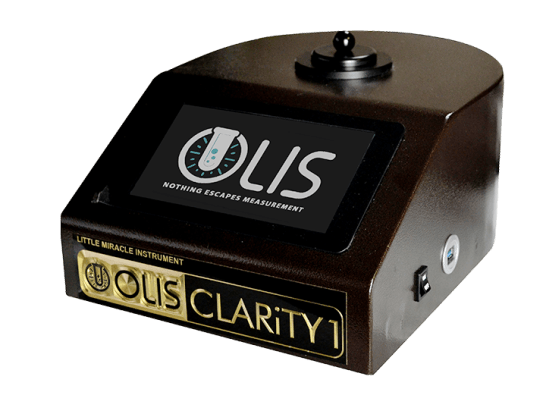The Main Principles Of Uv/vis/nir
The Main Principles Of Uv/vis/nir
Blog Article
The Greatest Guide To Uv/vis/nir
Table of ContentsUnknown Facts About Circularly Polarized LuminescenceUv/vis/nir Things To Know Before You Get ThisThe Best Strategy To Use For Circular DichroismExamine This Report about Circular DichroismCircular Dichroism Fundamentals Explained

Spectrophotometry is a tool that hinges on the quantitative analysis of particles depending on how much light is soaked up by colored compounds.
Little Known Facts About Uv/vis/nir.
A spectrophotometer is typically utilized for the measurement of transmittance or reflectance of options, transparent or nontransparent solids, such as polished glass, or gases. Numerous biochemicals are colored, as in, they soak up visible light and for that reason can be measured by colorimetric procedures, even colorless biochemicals can frequently be converted to colored compounds suitable for chromogenic color-forming responses to yield compounds ideal for colorimetric analysis.: 65 Nevertheless, they can also be designed to measure the diffusivity on any of the listed light ranges that normally cover around 2002500 nm using different controls and calibrations.
An example of an experiment in which spectrophotometry is utilized is the decision of the equilibrium constant of a solution. A certain chemical response within a service may occur in a forward and reverse direction, where reactants form items and products break down into reactants. Eventually, this chemical reaction will reach a point of balance called an equilibrium point.
How Spectrophotometers can Save You Time, Stress, and Money.
The quantity of light that travels through the solution is indicative of the concentration of particular chemicals that do not permit light to go through. The absorption of light is because of the interaction of light with the electronic and vibrational modes of molecules. Each type of particle has a specific set of energy levels associated with the makeup of its chemical bonds and nuclei and hence will soak up light of particular wavelengths, or energies, leading to special spectral properties.
The usage of spectrophotometers covers different scientific fields, such as physics, materials science, chemistry, biochemistry. UV/Vis/NIR, chemical engineering, and molecular biology. They are commonly utilized in numerous industries consisting of semiconductors, laser and optical production, printing and forensic assessment, as well as in laboratories for the research study of chemical substances. Spectrophotometry is often utilized in measurements of enzyme activities, determinations of protein concentrations, decisions of enzymatic kinetic constants, and measurements of ligand binding reactions.: 65 Ultimately, a spectrophotometer is able to figure out, depending on the control or calibration, what substances are present in a target and exactly how much through computations of observed wavelengths.
This would come as a service to the formerly developed spectrophotometers which were not able to soak up the ultraviolet correctly.
See This Report about Spectrophotometers
It would be discovered that this did not give satisfactory outcomes, for that reason in Model B, there was a shift from a glass to a quartz prism which enabled much better absorbance outcomes - UV/Vis (https://www.cybo.com/US-biz/on-line-instrument-systems-olis-inc). From there, Design C was born with a modification to the wavelength resolution which ended up having three units of it produced
It irradiates the sample with polychromatic light which the sample takes in depending upon its properties. It is transferred back by grating the photodiode selection which finds the wavelength region of the spectrum. Because then, the creation and application of spectrophotometry gadgets has increased exceptionally and has actually ended up being one of the most ingenious instruments of our time.

The Ultimate Guide To Uv/vis
Historically, spectrophotometers utilize a monochromator containing a diffraction grating to produce the analytical spectrum. The grating can either be movable or repaired. If a single detector, such as a photomultiplier tube or photodiode is utilized, the grating can be scanned stepwise (scanning spectrophotometer) so that the detector can measure the light intensity at each wavelength (which will correspond to each "action").
In such systems, the grating is repaired and the strength of each wavelength of light is measured by a different detector in the selection. When making transmission measurements, the spectrophotometer quantitatively compares the fraction of light that passes through a recommendation service and a test service, then digitally compares the strengths of the 2 signals and calculates the percentage of transmission of the sample compared to the reference requirement.

Report this page